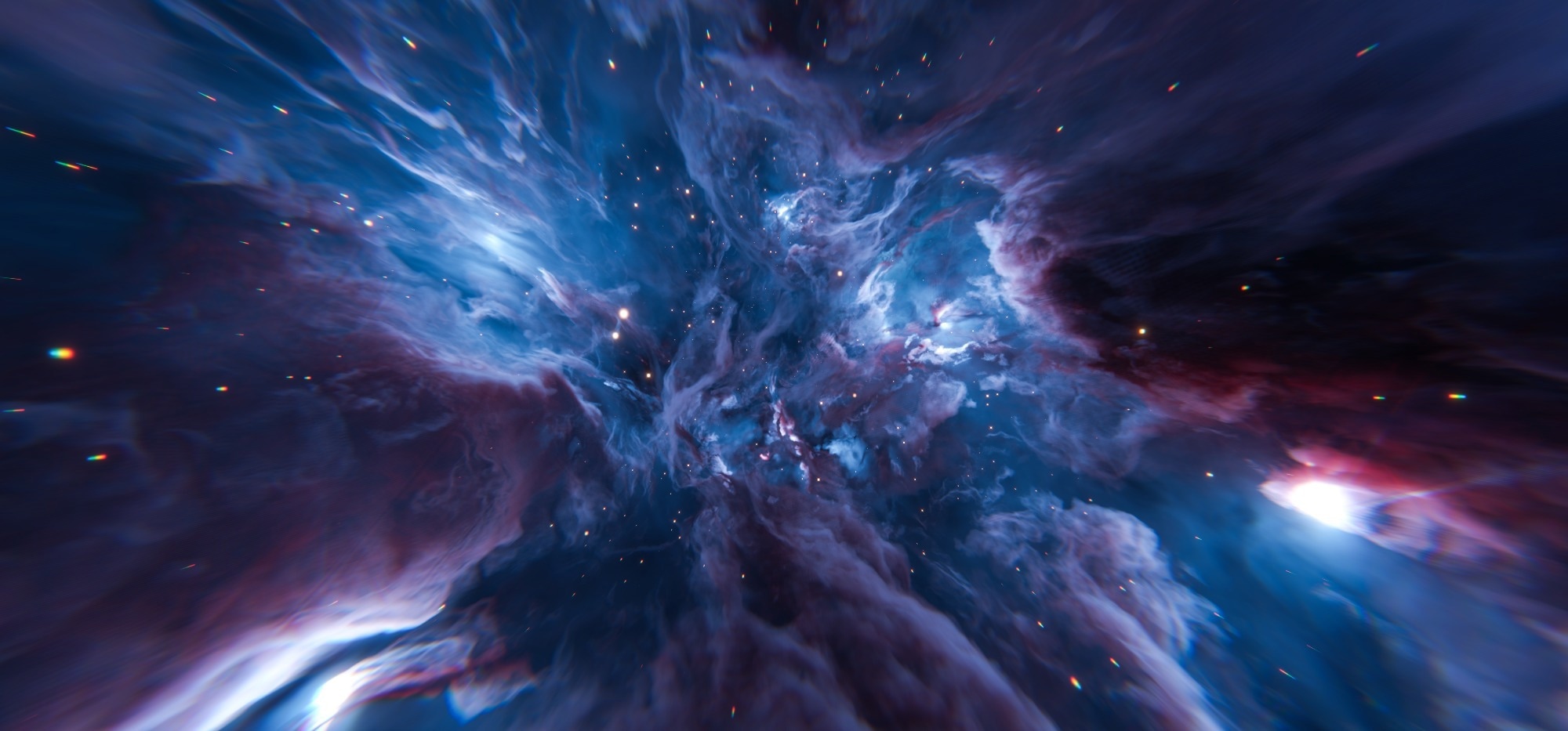Researchers at the University of Ottawa suggest that if the fundamental strengths of nature's forces, such as gravity, change gradually over time and across various regions of space, this could explain the unusual phenomena observed, including the evolution and rotation of galaxies, as well as the expansion of the universe. The study was published in the journal Galaxies.

Image Credit: Kumer Oksana/Shutterstock.com
For many years, astronomers have held the view that dark matter and dark energy constitute the majority of the universe; however, a recent study indicates that they may not exist whatsoever. Rather, what was interpreted as dark matter and dark energy might merely be the result of the natural forces of the universe gradually diminishing as it ages.
The study was under the leadership of Rajendra Gupta, an Adjunct Professor in the Department of Physics at the University of Ottawa.
Challenging Established Concepts
The universe’s forces actually get weaker on the average as it expands. This weakening makes it look like there’s a mysterious push making the universe expand faster (which is identified as dark energy). However, at galactic and galaxy-cluster scale, the variation of these forces over their gravitationally bound space results in extra gravity (which is considered due to dark matter). But those things might just be illusions, emergent from the evolving constants defining the strength of the forces.
Rajendra Gupta, Adjunct Professor, Department of Physics, University of Ottawa
Professor Gupta notes, “There are two very different phenomena needed to be explained by dark matter and dark energy: The first is at cosmological scale, that is, at a scale larger than 600 million light years assuming the universe is homogeneous and the same in all directions. The second is at astrophysical scale, that is, at smaller scale the universe is very lumpy and direction dependent.”
“In the standard model, the two scenarios require different equations to explain observations using dark matter and dark energy. Ours is the only one that explains them with the same equation, and without needing dark matter or dark energy,” added Professor Gupta.
What’s really exciting is that this new approach lets us explain what we see in the sky: galaxy rotation, galaxy clustering, and even the way light bends around massive objects, without having to imagine there’s something hiding out there. It’s all just the result of the constants of nature varying as the universe ages and becomes lumpy.
Rajendra Gupta, Adjunct Professor, Department of Physics, University of Ottawa
New Model Applied At Astrophysical Scale
In the previous year, Professor Gupta questioned the existence of dark matter within the universe through his extensive cosmological study. In this astrophysical research, he scrutinized the prevailing theoretical models concerning the rotation curves of galaxies.
In the updated model, the parameter commonly represented as α arises from the evolution of the coupling constants. Essentially, α functions as an additional “component” within the gravitational equations, generating effects akin to those that astronomers ascribe to dark matter and dark energy.
On cosmological scales, α is regarded as a constant (for instance, determined through the analysis of supernovae data). However, on a local (astrophysical) scale, within a galaxy, the distribution of standard matter (including black holes, stars, planets, gas, etc.) varies significantly, leading to fluctuations in α.
This variation results in the additional gravitational effect being contingent upon the location of such matter. Consequently, the new theory posits that in areas with a high concentration of standard matter, the extra gravitational effect diminishes, whereas in regions with lower detectable matter density, it intensifies.
Thus, rather than incorporating dark matter halos around galaxies, the additional gravitational influence is derived from α in the new model. This approach successfully accounts for the observed “flat rotation curves,” where stars exhibit faster movement than anticipated in the outer regions of galaxies.
Implications for Astronomy
Professor Gupta believes this idea could solve some of the biggest puzzles in astronomy. “For years, we’ve struggled to explain how galaxies in the early universe formed so quickly and became so massive. With our model, you don’t need to assume any exotic particles or break the rules of physics. The timeline of the universe simply stretches out, almost doubling the universe’s age, and making room for everything we observe,” said Professor Gupta.
Effectively, the extended timeline regarding the formation of stars and galaxies simplifies the explanation of how large, intricate structures such as galaxies and black holes could have emerged so early in the universe.
This theory has the potential to fundamentally alter the understanding of the universe. It even suggests that the pursuit of dark matter particles, an endeavor that scientists have invested years and billions of dollars into, may not be essential after all. Furthermore, even if these exotic particles are discovered through experimentation, they would need to account for approximately six times the mass of standard matter.
“Sometimes, the simplest explanation is the best one. Maybe the universe’s biggest secrets are just tricks played by the evolving constants of nature,” concluded Professor Gupta.
Journal Reference:
Gupta, P. R., et al. (2025) Testing CCC+TL Cosmology with Galaxy Rotation Curves. Galaxies. doi.org/10.3390/galaxies13050108.